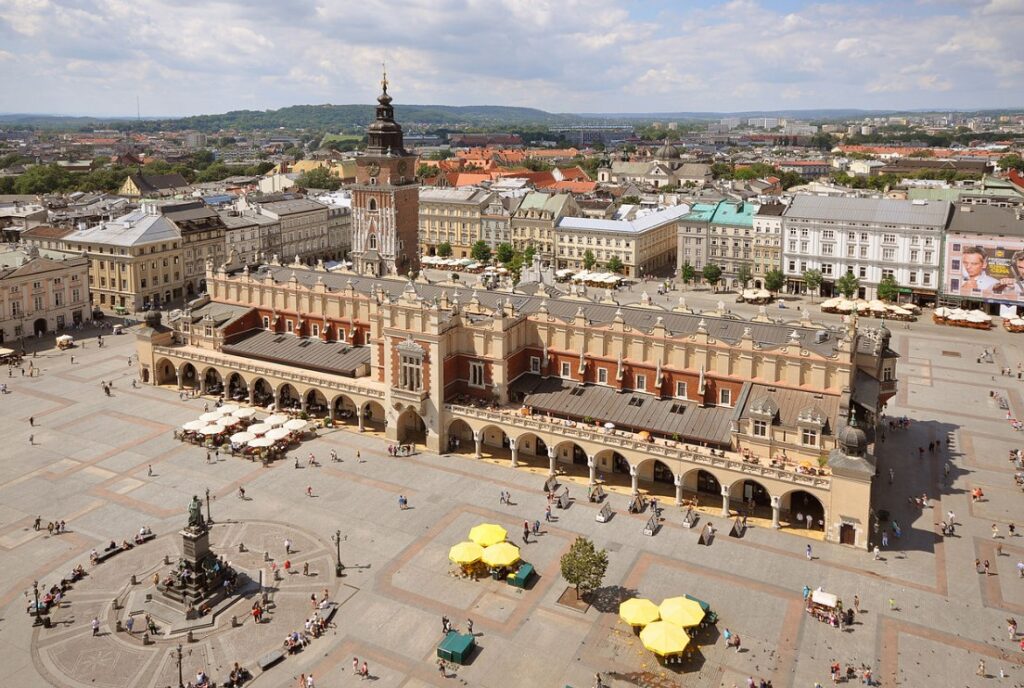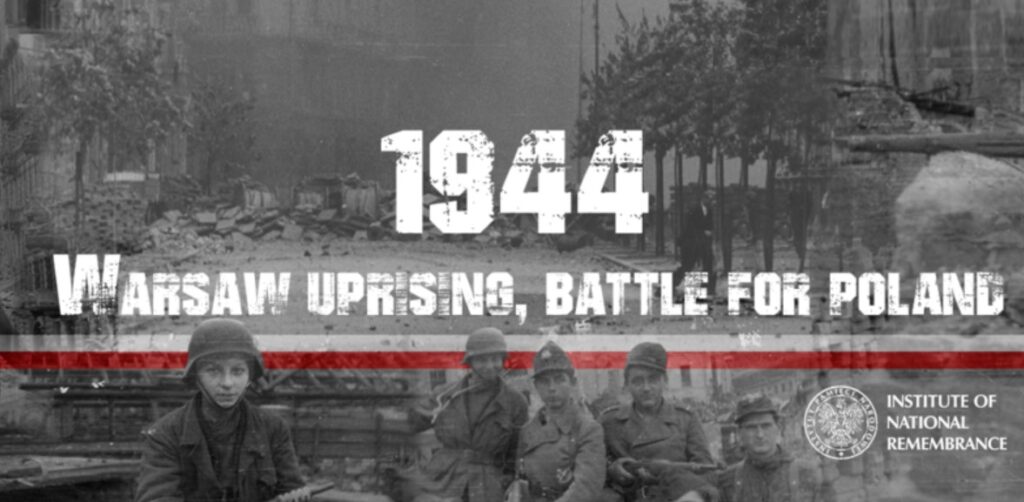Poland is bounded by seven nations and over the years (about a thousand of them) has been beaten up by almost every nation seeking to flex its military muscle. It had its day in the 1500’s but then became divided again by the next lot trying to flex.

After centuries of subjugation, Poland finally (or at least most recently) became independent in 1989. Under communism (after WWII) Poland became highly industrialised with mining, steelworks, and machinery production prevalent. After independence it moved to a free market economy. Since joining the EU in 2004 Poland’s economy has grown rapidly.
Today Poland has a population of around 38 million most of which are Roman Catholic but the Polish culture is heavily influenced by Slavic folklore.
Our trip to get to Poland involved an 8 hour train ride from Prague in the Czech Republic, through the Czech and Polish countrysides which was very pleasant. This trip delivered us to he town of Oświęcim. We spent the night there (having a nice local meal of Pierogi) and saved ourselves the drama of the crowds the next morning (visiting Auschwitz) as most of the groups set out from Krakow.


We were booked in for the 9am English speaking tour, which as it turns out was a good thing. The tours through here are booked (and sold) out for weeks in advance. We were there on 1 August and had we not booked well in advance, the next available booking was not until the 15th. So long story short, if you want to come, make sure you book well in advance.
The next thing that struck us was the total disrespect of the tourists. We had heard stories of Instagrammers posing for sexy photos on the railway tracks but on walking in we were issued with out tour group sticker. On the walk in there were thousands of these stuck on every light pole within cooee of the site.



Auschwitz
This was Jill’s main focus in coming here. Auschwitz was a complex of over 40 concentration and extermination camps operated by the Nazis during WWII. To say that visiting here was confronting is massively understating the power that this place holds. It is the site of the single largest mass murder event and has become a symbol of terror, genocide and the Holocaust. The exact number of victims is unknown but it is over one million and it is known that many Jews, Poles and gypsies died here.



The museum consists of two parts: Auschwitz I (the first and oldest camp) with the number of prisoners fluctuating between 15-20,000 and Auschwitz II, Birkenau which held more than 90,000 prisoners in 1944. Birkenau was the main extermination camp and represented the “Nazis’ Final Solution to the Jewish question”. The term was a euphemism for the annihilation and genocide of the Jewish people.



Four large gas chambers were built at Birkenau, capable of killing up to six thousand people each day. The gas chambers were disguised as showers, meant to persuade the victims that these were disinfection measures which they had to undergo before they were sent to work in the camp.



After the arrival of a transport at the ramp in Birkenau, the process known as selection took place. SS officers decided who would be taken to work, and who would be sent directly to the gas chambers. The prisoners selected for slave labour (16-30 year old fit people) were sent to one of the many auxiliary camps with the aim of extermination through labour.





The camp has areas set aside for the things that were confiscated from those about to be killed. Eye glasses, suitcases, shoes, clothes and even the hair shorn from corpses. In addition to this there were many photographs of the people that had been in the camps. Needless to say, the thought of taking photos of such things just felt wrong. So Jill and I just silently walked around and took in the enormity of what being at this place actually represented.
But even then, towards the end of our tour of Birkenau we went through one of the dormitories that housed 700 people, and upon entry saw graffiti by fleabags dated 2024. In this place many of the bricks had been defaced and people had deemed it important to scratch their name into the bricks.
With an incredulous look, I showed the guide and she responded that just last week a 20 year old German girl was caught doing exactly the same thing. I asked if they were severely punished, her response was that she hoped so. This then sparked a conversation about the public naming and shaming of people for such despicable acts.
There is no way that I can say that visiting Auschwitz is an enjoyable or pleasurable experience. But it is something. in hindsight, that both of us are glad that we have done. It is something that should be experienced (one time only).
Krakow
Having explored Auschwitz, we walked back to our hotel, collected our bags and hopped the local train to take us through to the town of Krakow. Krakow is one of the oldest (and second-largest) cities in Poland and was at one time the capital. The Krakow old town (where we were staying) was granted UNESCO world heritage listing back in 1978, one of the world’s first places designated this way.
Our introduction was not as pleasant, as the hotel that we had booked (and had confirmed) was shut. We arrived in the rain and stood outside, (in the rain) ringing the bell and buzzer and calling the website phone numbers. All to no avail. After 30 minutes we walked around the corner, found a similarly priced hotel, that was open, and checked in.
Krakow has been a busy trading city in Europe dating back well over 1000 years. During WWII the city was largely spared from aerial bombing and destruction. This means that the older and more historic elements of town are largely intact.

Rynek Glówny is the Central Square of Krakow it is a huge 10-acre square in the centre of largest in any of Europe’s medieval cities. The center of the square is dominated by the Cloth Hall.
At 80 m tall the 14th-century Gothic Basilica of the Virgin Mary is pretty hard to miss.
On the hour, every hour a trumpet signal (called the Hejnał mariacki) is played from the top of one of the two towers.
The tune is cut short mid-stream. This is done to commemorate a famous 13th century trumpeter who was sounding the alarm of a Mongol attack when he was shot in the throat.

This one we did not go to but when I saw it on the attractions list I had to include it for my sister Karin, who is a glass artist. It was the muWi Stained Glass Museum (Muzeum Witrazu) where exhibition spaces intertwine with the old (but still functioning) stained glass workshop, functioning since 1902. Here you can do a guided tour of the historic workshop, directly above the heads of artists and craftsmen.







If you are super keen you can pay extra and have a 2 or 3 hour workshop ($93-130) with a master craftsmen and make your own stained glass souvenir. There is a third 2-4 day option for a bit over $1100.
For the younger crowds there is also a Lego Museum (Bricks and Figs) an Arcade Museum (a private collection of over 150 arcade games and pinballs available on Free Play). The oldest table game dates back to 1936 but the main focus is on the classics of the 80’s and 90’s. Then there’s Wheels & Heels a collection of miniature cars and iconic dolls from around the world.



And if you are more adventurous you can always head off to the Lost Souls Alley (a haunted house experience), Axe Nation (an axe throwing club), Krakow Shooting Academy (choose from dozens of weapon models from WW1 to the modern era).
Our limited time in town did give us enough time for a lovely wander through the old town. More importantly, it did get us to a charming local restaurant (recommended by our hotel) in a basement in the heart of old town. Starting with a local cider aperitif, we followed with the soup (in a bread bowl), cheese and pierogi mixed entree and topped off with a wild boar main.








Our time in Krakow was short but it was lovely, and was really quite well priced.
Warsaw
We really only transited Warsaw. We had planned to come and stay for a while but the prices were wildly overpriced. We searched and tried to find out why, but could not come up with an answer. As we were going through Auschwitz it became apparent. Our timing was such that we were in Auschwitz on the 80th anniversary of the Warsaw uprising.

The Warsaw uprising was a major World War II operation to liberate Warsaw from German occupation.
It occurred in the summer of 1944 and was led by the Polish underground resistance. It was timed to coincide with the retreat of the German forces from Poland ahead of the Soviet advance.It was the single largest military effort taken by any European resistance movement during World War II.
According to Wiki the uprising was fought for 63 days with little outside support. The Red Army did not reinforce resistance fighters or provide air support. Declassified documents indicate that Joseph Stalin had tactically halted his forces from advancing on Warsaw in order to exhaust the Polish Home Army and to aid his political desires of turning Poland into a Soviet-aligned state.
Poland was actually much better than I had imagined. Auschwitz, while confrontational was fascinating. Krakow was really nice and largely untouched by any of the many wars that have taken place here and Warsaw showed enough signs to suggest that we could easily come back for a more detailed visit.
Thanks for including the stained glass museum/ workshop. Just gorgeous!